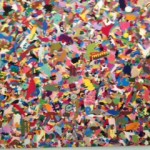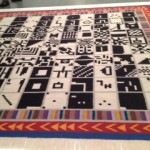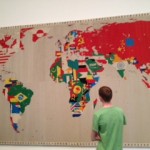Does it work? LET’S FIND OUT EH
Category Archives: Uncategorized
Who We are in Memoir: A New Book
I am pondering who we are and want to be in memoir.
Maybe we have no choice. But writing takes time and revision and so, in fact, we always do.
Reading Joan Didion’s BLUE NIGHTS made me sad: for her daughter, for sure, but also for Didion herself, who has not entered old age with resilience or any care for wisdom. She’s frail, she tells us again and again. But she’s also Joan Didion and a killer writer still, though she claims not and relies more than may be wise on the repetition of key phrases. All through the book——a book about her daughter’s death——you keep wondering, what happened? What several things (for there seem to be several things) went wrong? It’s not that kind of memoir. Didion will not go there so you need to look back at THE YEAR OF MAGICAL THINKING to hear more.
Francisco Goldman’s SAY HER NAME, which I thought wonderful and gripping, sent me on this memoir binge. Roland Barthes’ MOURNING DIARY kept me there since I had recently lost a mother and a brother too.
So I have been doing my own writing hoping to do it in way that feels true to me and speaks to others. I am processing my new book: PICNIC IN THE DARK: THE CLASSICS AT A TIME OF WAR AND LOSS. It’s a sequel to my earlier memoir about growing up in-between Italian and Jewish American cultures in New York. It’s also a meditation on why we read classic books at times of loss and how they speak to us at this time of ongoing wartime.
I’ll say more from time to on www.mariannatorgovnick.tumblr.com. I love this work and can’t wait to read more!
THE BROTHERS SIZE in NC
I was lucky enough to see THE BROTHERS SIZE at MANBITES theater in Durham NC. I was blown away. Great set, great cast, great direction = one amazing evening. Filled with refences to West African mythology but as contemporary as today, the play explores tensions between two African American half brothers: one hard working, proper, terse, and filled with unhappiness and rage; the other inclined to mess up in life but full of charm and torn between a compelling attachment to a mysterious man he knew in prison and his desire to respect his brother’s wishes and stay out of trouble. He also sings like dream, setting up a wonderful climax in which Ogun, the stern brother, surrenders to his overpowering love for the younger brother he ever and always wants to protect. Recommended. Wonderful.
Learning about Riesling
Normally, I prefer reds. But I got educated at a Summer of Riesling dinner at Hearth restaurant at a dinner designed to prove that Rieslings, that friendly summer wine, is totally complex and versatile.
The key is balance: sweetness at the tip of the tongue totally matched by the acidity of the wine. Kabinett (never knew what that meant) are your basic Riesling: table wine, accessible, with dryness a possibility. Spatlese means late harvest and while certain soil conditions make for dryness, these are normally lush and sweet, the grapes having had time to mature and even rot. An Abtsberg wine was for the abbots, the heads of the monasteries on or near many of the vineyards: likely to be the best wines and the most expensive. A Herrnenberg can be plebeian but still age gloriously—something I did not not know white wines could do.

But while a California white should be had while young, the 1997 Riesling we drank tasted wonderful.
And then there are the Eiswein, from frozen vines and very, very sweet, Normally, I could not afford the stuff by the half bottle. But a glass was sweet in more ways than one.
My thanks to Hearth, to Marco Canora, George and staff, to Paul Grieco (our wine host) and to Carl von Schubert who brought the wines from his Maximum Grunhaus estate.
Memorable!
Bringing the World into the World
Bringing the world into the world; giving time to time: the arresting phrases belong to Alighero Boetti, subject of a new show at MoMA. He died at 54 and so we’ll never know where his art would have gone over time. [It was a brain tumor… so sad.] But what I saw in NY confirmed my sense of what I had seen earlier that he was a talented thinker.
It’s conceptual art but also has the obsessive edge I value. Again and again, he plays with words reproduced and arranged at random but with a symmetry that brings order out of chaos or, better yet, plays order against chaos, relishing the tense effect. Again and again, he finds art where others would not: in the arrangement of stamps; in graph paper lines reproduced by hand where the errata make their mark; in maps coded by color and national flags in works that are tapestries rather than painting to sculpture.
It’s the genre crossing I like here: the maps, and (below) woven work, some done during a decade of visiting Afghanistan. Those carpets must have taken a lot of time and they reproduce bar codes and iPhone scanning. Those multicolored paintings are really woven fabrics, cut out and assembled collage style. The found object: the world. The arrangement: the world. All performed, over time.
Witnessing History
Saw a movie and am reading two books that take very different approaches to witnessing history and raise questions about claiming famous ancestors. First up, the movie.
It’s 14-17 July 1789: the Bastille falls amidst cries that Louis XVI, his Queen, and most of their friends lose their heads. Does the day seem portentous at Versailles? Not really for Sidonie, the Queen’s reader, nor for the other courtiers, nor for Marie herself. Disturbing whispers circulate, to be sure. But the Court’s normal business of gossip and flirtation basically proceeds. By the 17th, all that will change and we witness it along with Sidonie, who has her part to play by then.
Whether she’s a servant or an aristocrat, she’s clearly in danger. So much so that one woman said to me as we were leaving: “Do you think she lives?” Well… in 2012, surely not. But that kind of reaction tells you that Director Benoit Jacquot gets us to feel like we are witnessing history in FAREWELL MY QUEEN though it’s history remained for 21st-century tastes.
I am only 15% of the way into DREAMING IN FRENCH and note here how easily the % gets rendered rather than the # of pages for e-book users like me. Alice Kaplan, a friend and colleague, is a terrific writer and this book is a fun read that includes lots of research about post WW II France that is draped over true story of three famous women who studied abroad: Jacqueline Bouvier Kennedy, Susan Sontag, and Angela Davis. I’m only up to Jackie and find myself wondering: If Jacqueline Bouvier had not become Jackie Kennedy would the book have been written and read? Not so sure about that. I’ll be reading on to see how the famous ancestor gets claimed here.
Final, light read: Alan Furst’s MISSION TO PARIS. The Furst hero has already appeared. He’s a fictional movie actor in this case and not yet playing James Bond, though he will, he will. As in most Furst novels, there’s a wonderful feeling of historical background here: right now, Munich is about to happen and halt the momentum in Paris towards war.
Fiction and history; fact and history: a curious and ongoing interplay for which I am always a sucker. 
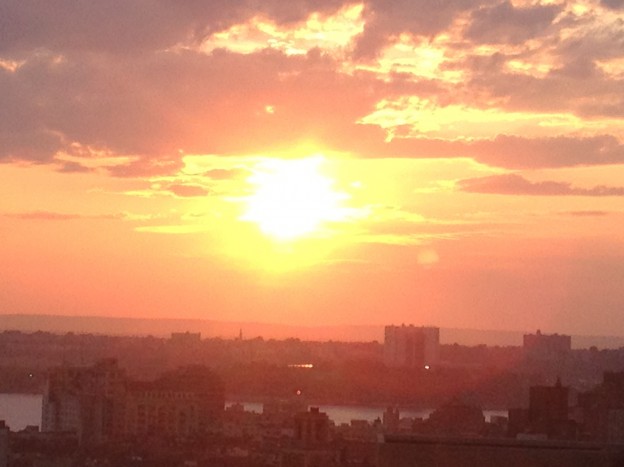
Summer in This City
You know the kind of day I mean: intense; brutal; the sidewalks giving up smells of garbage long forgotten. After a bout of New York grays, the city turned up the heat last week. All around me, people talked about the Hamptons, upstate, and (this being my first full summer in New York in quite some time),I had to wonder.
Then, the heat lifted. The museums hummed; ice cream was eaten in Parks. At night, up high, the air was fine and sunsets ruled. There are many places to spend the Summer, some maybe better. But it’s never bad to take Manhattan.

The Return of the (Coney Island) Native
Coney Island 2012 is a different kind of place.
Cleaner. Friendlier. A mellow mix of New Yorkers enjoying the balmy air.
The Boardwalks are low to the ground now, making “under the Boardwalk” a code harder to understand. The feeling is mellow, almost un-New-York, a feeling amped up when the cool air hits your face on a sweltering day in the City. All in all, it’s pretty cool in more ways than one. It doesn’t matter that the Cyclones game is kind of dull when the real live Cyclone is part of the view. It doesn’t matter that the game goes into extra innings when the fireworks go up on schedule by 10 p.m.
I was born close to the spot I am sitting at the game. Literally, this is the Return of the Native, Coney Island style. When we neared the stop in Bensonhurst where I had grown up and waited many a long day and night for the N train, also lovingly called the Sea Beach, with a cruder nickname, the recorded conductor keep saying “we are being held here momentarily.” After the third time, it began to seem symbolic. Like the evening. At Coney Island.
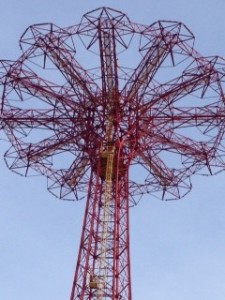

Roland Barthes: Writing Criticism, Writing Memoir
Roland Barthes gave us a model of the critique of mass culture that continues to be on point today. I suspect he would have loved Twitter and blogging, though we’ll never know. He might have turned into a mandarin had he lived into our age and scorned the internet, though I rather suspect not. In a Times Book Review article, Sam Anderson talks about his favorite pieces in Barthes. They establish a goal, an ideal for writers: that decades after we write someone will have favorite pieces to recall. If you have a Barthes favorite, what’s yours?
Jeffrey Eugenides uses Barthes as a sign of the times in The Marriage Plot. The latest Barthes is his touching Mourning Diary — also on point for our time. It may be the link between the personal and the critical that speaks most about Barthes today, that makes him still “surprisingly relevant today.”
On Loving A City
Orhan Pamuk says some stunning things about his love for Istanbul.
They made me wonder whether all people who love a city feel something very similar.
Here’s what he says: What do you think?
“What gives a city its special character is not just its topography or its buildings but rather the sum total of every chance encounter, every memory, letter… and image jostling in its inhabitants crowded memories.”
“Anything we say about the city’s essence says more to about our own lives and our own states of mind.”
“Why should we expect a city to cure us of our spiritual pain? Perhaps because we cannot help loving our city like a family.”
“I embraced the city as my own – no one had ever seen it as I see it now. Once I had mastered this new poetic outlook, I chased with unchecked ardor after anything and everything connected with the city.”




